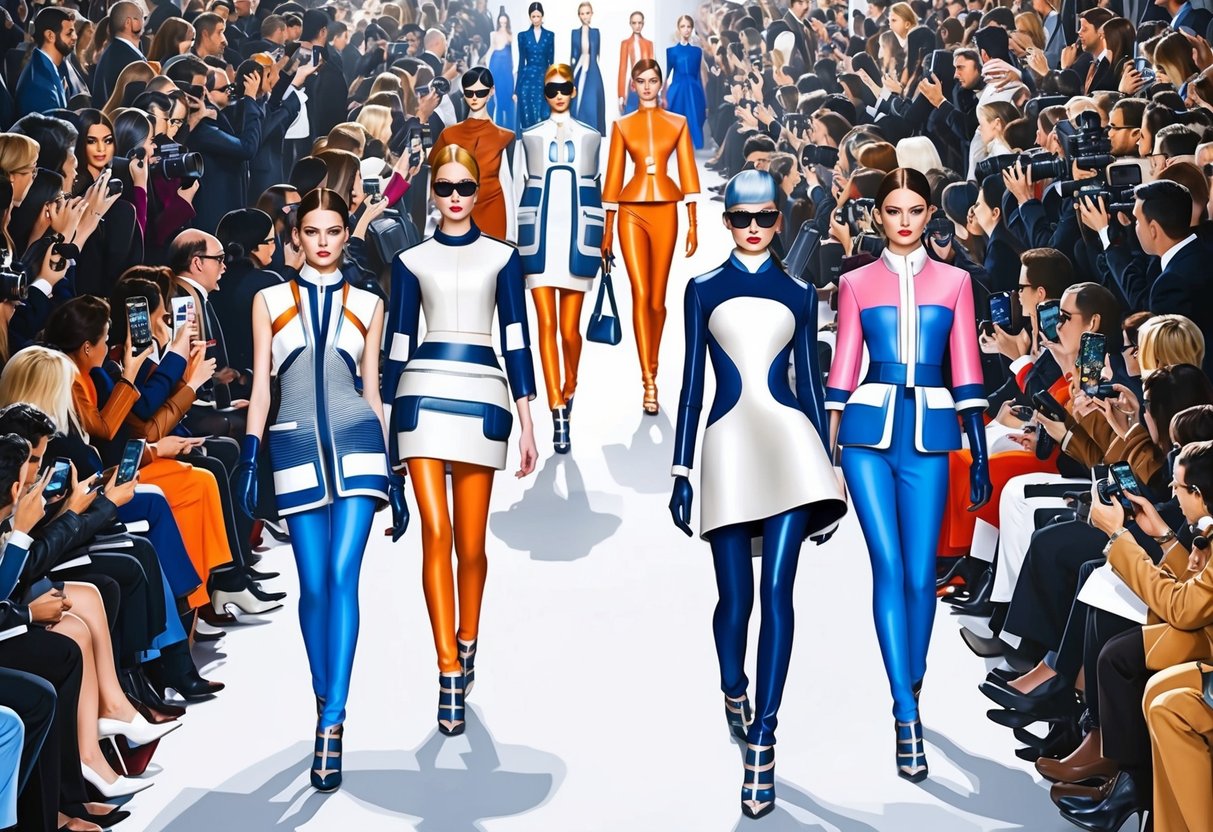
Noteworthy Runway Moments
Major runways continue to set the agenda for new-season fashion trends. Iconic shows highlight both headline-making debuts and the rise of innovative streetwear elements influencing mainstream style.
Breakout Trends from Recent Shows
Fashion weeks in New York, Paris, Milan, and London have delivered a mix of nostalgia and modernity in 2025. Runways displayed a noticeable return to softness and new maximalism, with relaxed tailoring, sheer layers, and bold, sculptural silhouettes.
Street style played a key role, as street-inspired looks moved seamlessly into luxury spaces. Designers embraced everyday wardrobe essentials, such as wide-leg trousers, crisp shirting, and oversized blazers updated with technical fabrics or unexpected proportions.
Color trends leaned toward icy blues, warm butter yellows, and classic monochrome palettes. Textural variety stood out, especially in the use of twisty or draped fabrics that produced dynamic silhouettes.
Statement accessories—oversized totes, sculptural jewelry, and futuristic sunglasses—rounded out looks seen both on runways and in crowds outside the shows. Several collections featured playful layering and a blend of casual and formal elements, reflecting a renewed focus on personal style and comfort.
For a closer look at what defined the season, Harper’s Bazaar offers a detailed summary of standout runway trends for fall 2025.
Unexpected Collaborations and Debuts
The 2025 fashion season featured headline-grabbing partnerships and surprise designer debuts that shifted the industry landscape. Luxury houses teamed up with streetwear labels, resulting in collections that mixed high-end craftsmanship with utilitarian elements, like utility vests and cargo details.
Emerging designers made memorable debuts, bringing new perspectives with eco-conscious fabrics, gender-fluid tailoring, and inventive upcycling techniques. These debuts often prioritized sustainability and inclusivity, expanding the notion of runway fashion beyond traditional expectations.
Brand crossovers also made an impact, as sportswear brands and avant-garde designers united for capsule collections. This fusion resulted in versatile, collectible pieces that quickly gained attention from critics and buyers alike.
Events such as Fashion Week 2025 underscored the global appeal of these moments, as brands used the runway to introduce new creative directors or revive archival pieces. For more on this season’s pivotal fashion events, explore the global fashion calendar for 2025.
Contemporary Streetwear Evolution
Streetwear is undergoing major changes as urban culture, nostalgic aesthetics, and cutting-edge technology blur the lines between high fashion and everyday comfort. Functional materials, striking silhouettes, and digital integration are reshaping what defines modern urban style.
Urban Influences on Fashion Trends
Streetwear’s roots remain deeply tied to the energy of city life, as seen in collections that fuse utility with bold self-expression. Today’s designs often draw from skate, hip-hop, and art scenes, with influences appearing in oversized fits, logo-heavy pieces, and eclectic layering.
These elements reflect cultural conversations happening in places like New York, Tokyo, and London. A notable trend is the continued revival of late 1990s and early 2000s styles.
Baggy jeans, tracksuits, and vintage sneakers echo the fashion nostalgia many consumers crave. Luxury houses now collaborate with street icons, creating new status symbols and expanding the intersection between streetwear and high fashion.
This blending of the streets and runways is a hallmark of the evolution of streetwear.
Key trends seen in urban-inspired streetwear:
- Graffiti graphics and custom prints
- Retro sportswear and varsity jackets
- Visible brand partnerships
Tech-Driven Designs and Materials
Advancements in technology are giving rise to a new era of functional streetwear. Today’s leading brands and designers are introducing techwear pieces that combine weather-proof fabrics, modular pockets, and integrated features for adaptiveness.
Smart fabrics and interactive elements are being woven into designs, offering clothing that reacts to different environments or connects with digital devices. For example, some brands use scannable barcodes sewn into garments or experiment with textiles that change color based on temperature.
As a result, consumers are experiencing a shift toward clothing that is both practical and innovative.
Core features of tech-driven streetwear:
- Water-resistant and breathable materials
- RFID tags, QR codes, and NFC integrations
- Sustainable approaches, like recycled fibers and energy-saving dye processes
Technology and sustainability are not opposites in streetwear. Many futuristic brands now prioritize eco-friendly sourcing alongside high-performance features, shaping the direction of urban fashion in 2024.



